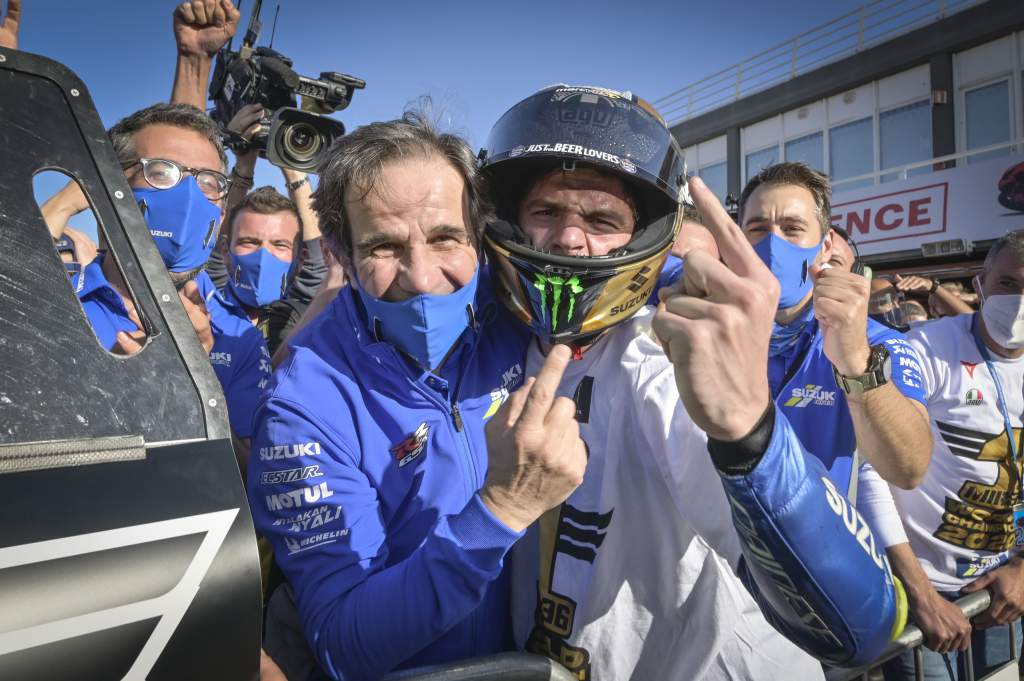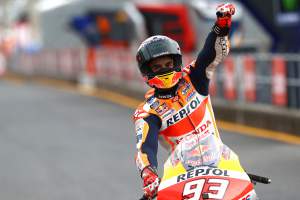While everyone expected that Suzuki duo Alex Rins and Joan Mir would start the 2020 MotoGP season strongly, few predicted the eventual outcome of Mir being crowned the new world champion after a consistent and fast year.
With team-mate Rins third in the championship as well and a multiple podium finisher himself, the season marks an absolute high point for Suzuki’s MotoGP project only five years after it returned to the class.
It’s a classic underdog story, as well, with Suzuki’s team one of the smallest and least well-off in MotoGP.
“Sometimes our mechanics joke that we have a production bike, a street bike!” :: Davide Brivio
Working out of a relatively tiny R&D department at the firm’s Hamamatsu headquarters and with only two bikes on the grid, team boss Davide Brivio has been lauded since Mir lifted the crown for the team that he assembled to make it all happen.
A veteran of the sport and no stranger to success after successfully poaching Valentino Rossi from Honda to Yamaha during his tenure in charge there, the Italian has worked hard since joining Suzuki to ensure that the team’s leanness is a strength rather than a weakness.
He says the key to capitalising on 2020’s successes isn’t to expand but to stay true to Suzuki’s strengths next season.
“I arrived in Yamaha in 2002 and it was [Max] Biaggi and [Carlos] Checa in the team,” Brivio tells The Race.
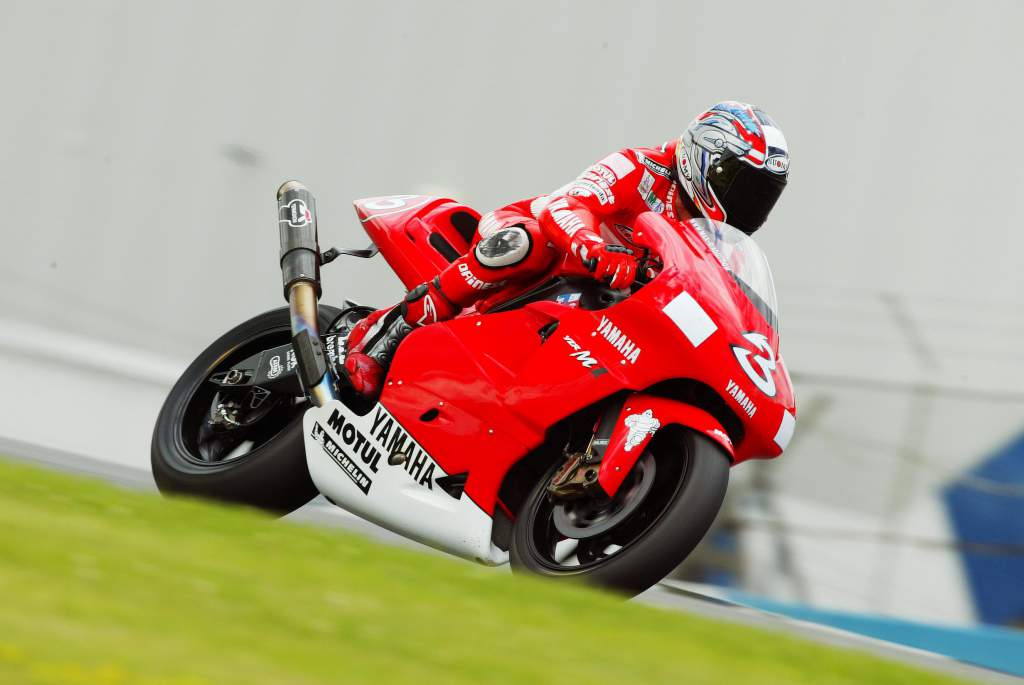
“We did a year of observation, then in 2003 Valentino arrived and the team changed a lot.
“When I arrived in Suzuki at the beginning, it felt like Yamaha at the beginning, 15 or 20 years before.
“They wanted to win, they weren’t winning, the people were quite humble. I could find a place where I could work.
“They needed to become a little more aggressive, but they supported us well.
“In Suzuki, I feel like the racing department is smaller and has limited resources.
“They have always been very open to accept cooperation from the European team, suggestions and ideas. When I first went there with all the staff, they showed us everything and explained what they were doing.
“They were very open, and that’s unusual for a Japanese company to do with non-employees, the team staff at the circuit. But it paid off.
“We tried to cooperate, and we’re one group working together. I don’t know if it’s the best way or not, but it is our way.”
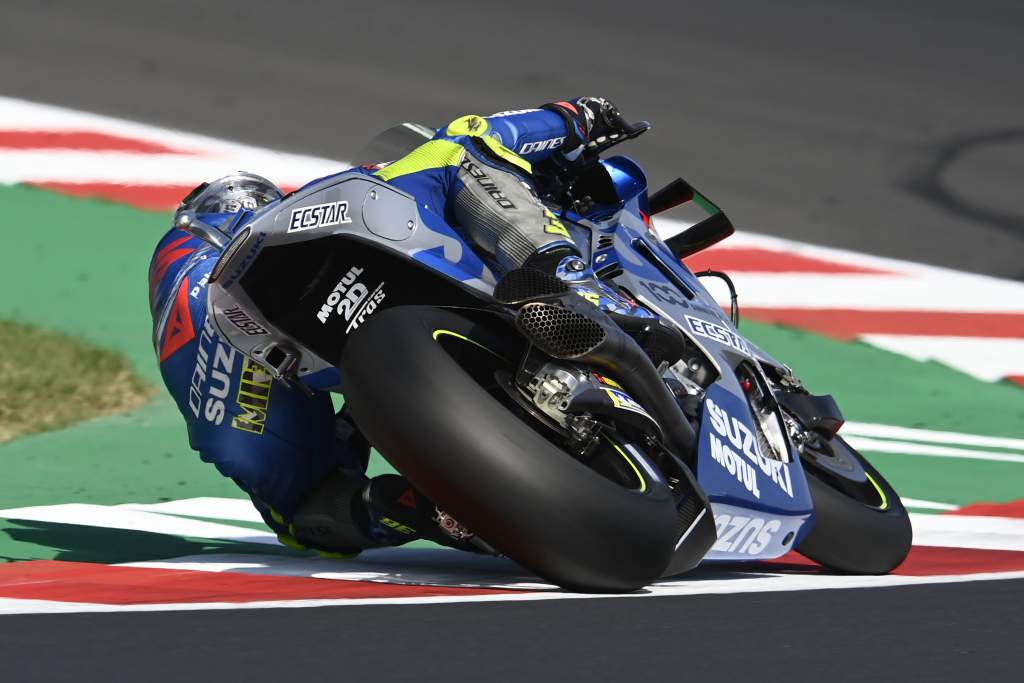
It’s not something he’s rushing to change either, even with an influx of new cash next year as the champion teams add new sponsors to its bike.
“I have to discuss with Suzuki the strategy now,” Brivio admitted, “so see if I have a white paper to work with, because it will be a great challenge to remain at the top.
“I would put on that paper to see where the organisation can be improved, maybe for the engineering team to have more people, and then to see where we can develop the bike.
“I know that we can’t touch the engine for next year, but in Japan they are working away. We are still missing a few things that I think we could do.
“Maybe we’ll need a little bit more budget to create new things, but OK. It’ll be a great challenge to remain at the top, but maybe we can reinforce what we’ve got.”
That won’t happen quickly, though, with one characteristic perhaps borne of Suzuki’s small size being its careful consideration of every step it takes.
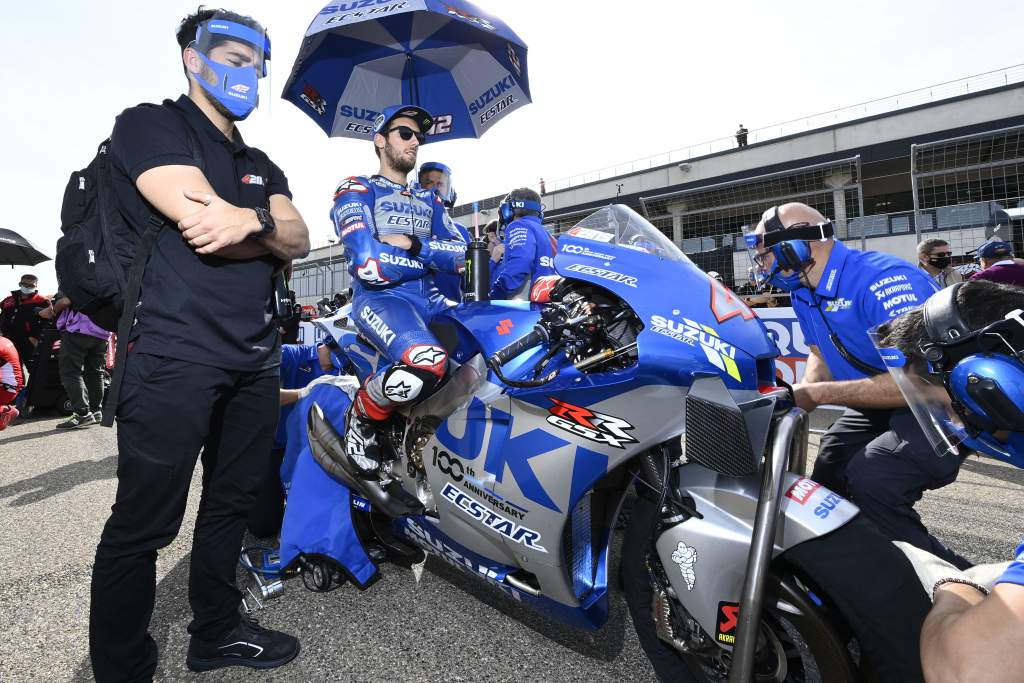
It fields a bike devoid of many of the increasingly-outlandish tricks and gadgets of Suzuki’s rivals, and Brivio is adamant that’s part of the success.
“I’m not an engineer, but what I can see is that the Suzuki is probably the most simple bike, without any sophisticated items,” he says.
“If it was only Italian and Spanish, maybe it would be chaos – but the Japanese help us” :: Davide Brivio
“Suzuki and Honda are the simplest. We don’t have so many things – we only added the start device this year to the front, not the rear, we don’t have the ride height adjustment, we don’t have so many things.
“Sometimes our mechanics joke that we have a production bike, a street bike! But they say this because it’s very simple to work on – the assembly. It’s very quick to do things, to change an engine. I don’t know if it’s key, but it’s a good point.
“In Suzuki, I found a great knowhow in terms of engines, and you can see on the production bikes too that they’re always good quality products.
“That comes into racing too. On chassis, they’re good, and ours is a little different from the others too.
“What we’ve done in these years with the team at the track is to keep things simple, not make mistakes, select the new parts well and pay attention to what is working and not working before making decisions.”
While Suzuki might not be the biggest team on the grid, what it’s managed to do under Brivio perhaps better than any of its Japanese rivals is integrate the two wings of the team.
Working both with a race team based in Europe – comprised of multiple nationalities but predominantly Italian and Spanish – and with an engineering division back in Japan, making the two sides gel well together and bounce off each other has been key, according to Brivio.
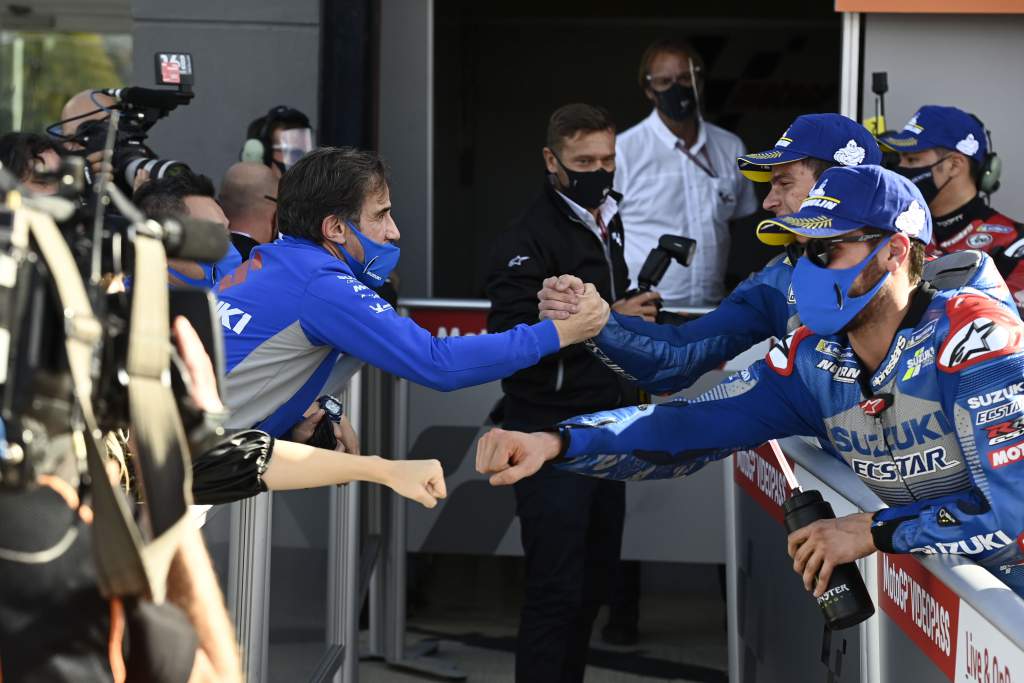
“The mix between Japanese and Italian (or let’s say latin), is a good mix in my opinion. The Japanese keep us a little calm, they brake us when we go too fast,” he says.
“But we try to accelerate them, to push them, and in the end you find a compromise.
“If we were only latin, we would make too much of a mess. If it was only Italian and Spanish, maybe it would be chaos – but the Japanese help us.
“Everyone involved in this project feels like they are a part of it, like they gave a contribution to it.
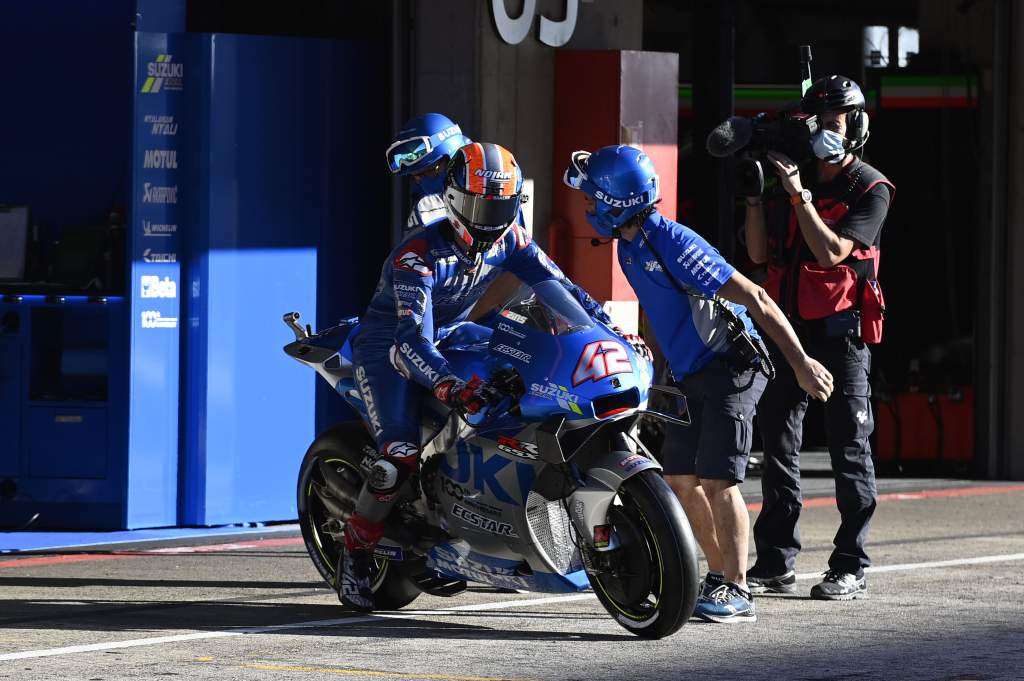
“There are mechanics and engineers who have worked with us since the very start, and Joan won the championship but he did it thanks to their work.
“There is no key person in Suzuki – we don’t have one person. You see in F1 teams or maybe in the European MotoGP teams, there is a man in charge of the project.
“But in the Japanese teams, there’s not one person. There are project leaders or managers, but they’re not the designers of the bike in the same way.
“There are of course very important people like [project leader Shinichi] Sahara-san, but he works with a group of people, with a staff.”
That relationship even extends to Suzuki’s riders, something that perhaps wasn’t quite the case at the start of 2020.
Things have improved since then and with Brivio seeing Rins and Mir turning into a killer combo, the news that they’re going to remain a partnership for two more years was music to the boss’s ears.
“When Joan won the championship, Alex joined the team for the photo wearing the T-shirt like everyone else,” says Brivio.
“That is a great sign for the future for me, because it’s not an easy thing to do.
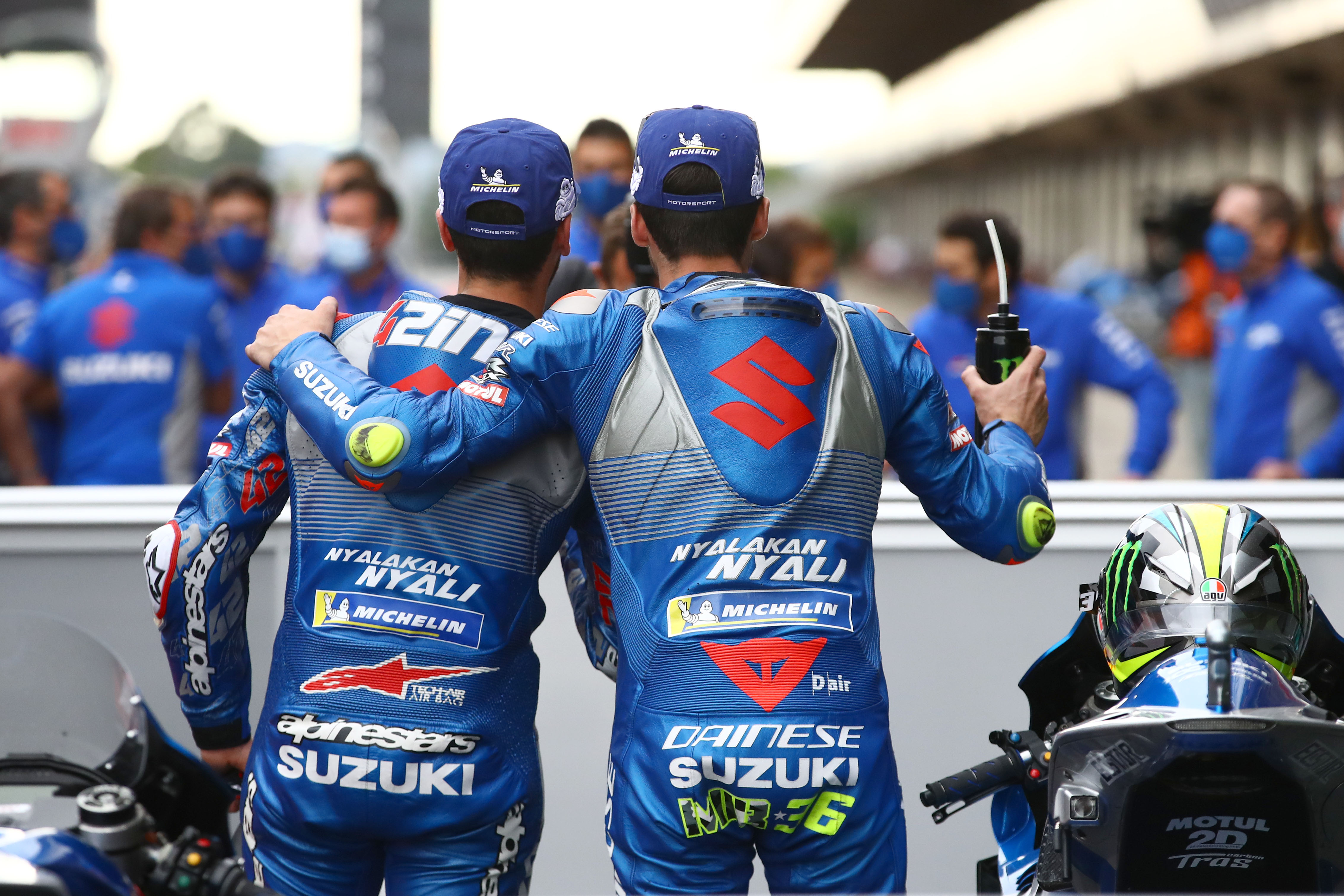
“We respect the competition between them, and of course they want to beat each other, otherwise they’re not the rider we want.
“They’re in competition, they want to beat each other, but what we want to transfer to them is a sense of the team.
“They are working for Suzuki and we want them to have respect between each other and to be correct with each other.
“Like everyone we hope that Marc comes back in great shape, but for the love of the sport we want to challenge him” :: Davide Brivio
“At the beginning of the year their relationship was maybe a bit tense, but it has been getting better and better. Maybe standing on the podium together helped, but they have a good relationship now and I hope it continues.
“It’s something that you have to work at every day. Not just with the riders. When you have a group of people, you have to work every day on motivation, to make sure that there is no problem or conflict. Just like in every office or every family!”
All that adds up to leave Suzuki in the best possible place it could hope for, with a strong chance of defending a premier class world championship for the first time since 1982.
There’s just one asterisk hanging over the whole thing, of course – the absence of previously-dominant world champion Marc Marquez, who sat out the entire 2020 season through injury.
But while some on the grid would be pessimistic about their chances amid the Honda rider’s hopeful return next year, Brivio is instead excited.
First and foremost a race fan just like everyone else, he shares the belief of some key figures in the paddock that it won’t be plain sailing for the six-time MotoGP champion.
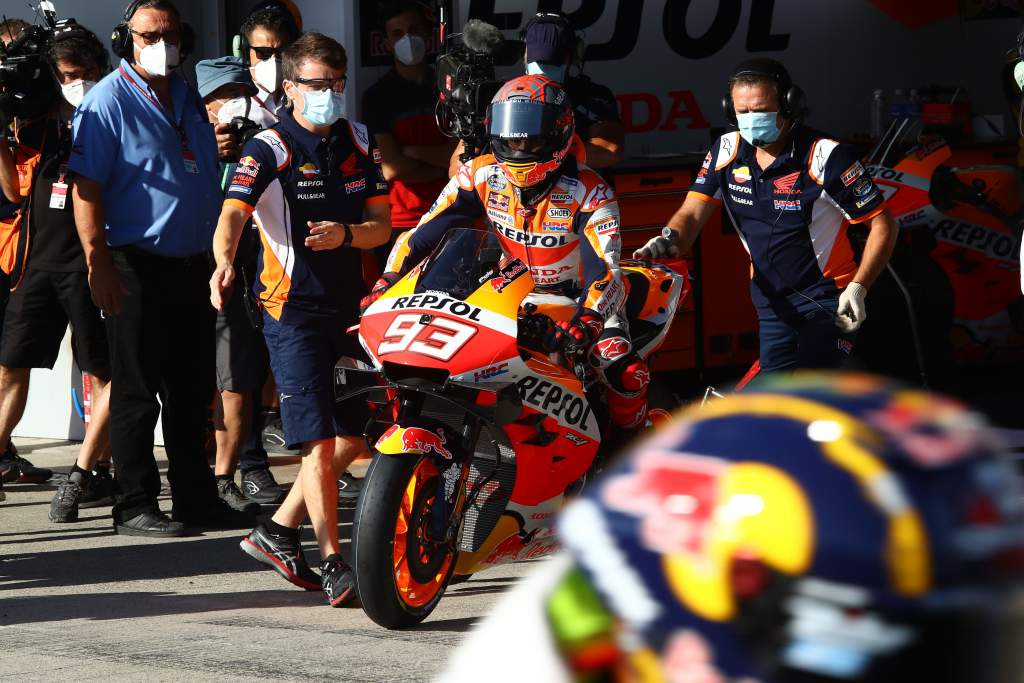
“Of course everyone is talking about how Marc is not here, but first of all for a young rider like Joan to finish second behind Marc is a good start!” says Brivio.
“But like I’ve said already, we discovered a young generation of strong riders this year. Joan, [Franco] Morbidelli, [Fabio] Quartararo, Alex [Marquez].
“I think when Marc comes back, I hope for the good of the show and the sport, that he has more contenders or has to put more effort into defending the crown.
“He’s still the strongest, he’s still the reference for everyone, but it’ll be interesting for MotoGP to see him coming back.
“Maybe he’ll win all the races again, but when he comes back he will find new competitors which he doesn’t know, because he hasn’t raced with them this year.
“He will have to discover them, and maybe these guys will push even more this winter to challenge him next year. It’s exciting, and I’m interested to see it.
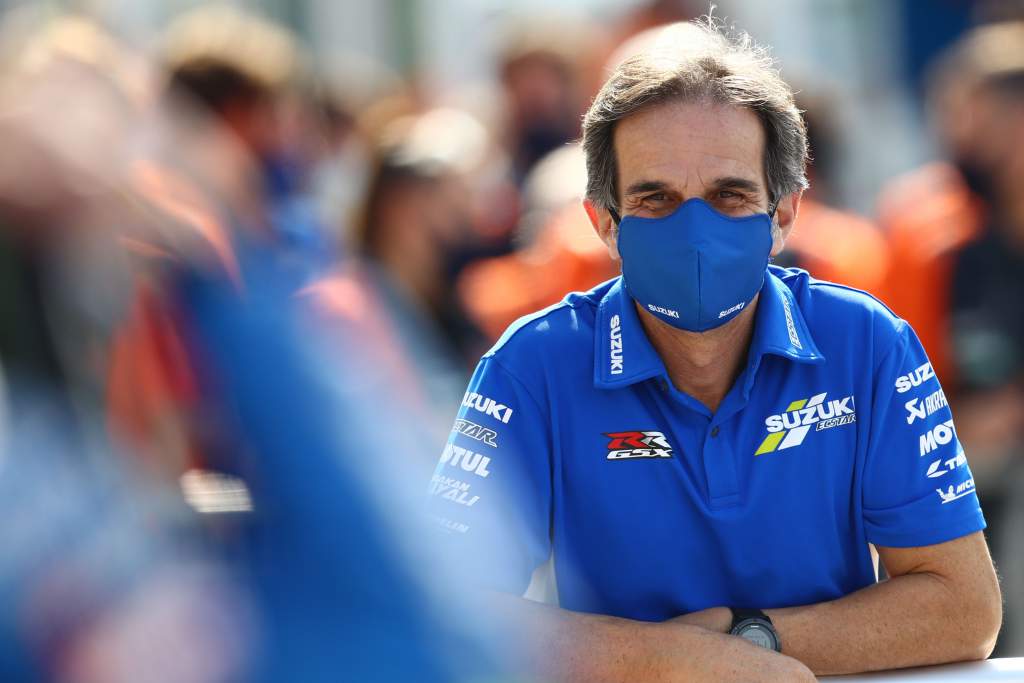
“I’m excited for the challenge. Like everyone we hope that Marc comes back in great shape, but for the love of the sport we want to challenge him and see what level we are at. It’s all part of the sport, and it’s going to be very interesting.
“At the first race, we will be considered the favourite, because we are the champions.
“But after that, we’ll see how the situation develops!”


